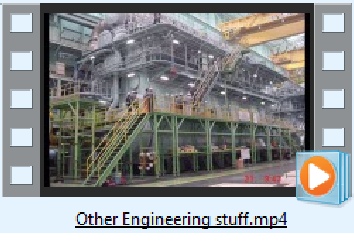



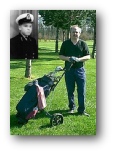

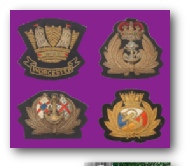



Please Note :-

1d
Well, a letter to the New Zealand Shipping Company (NZSCo) secured me a place as
Junior Engineer once there was a ship available. I joined the Otaki on the 3rd April
1970 in Melbourne. Previously as a apprentice, I did a trip on a BHP ship The Iron
Spencer -
After a very enjoyable train trip of some days across the Lullabor Desert I arrived in Melbourne and warily climbed the gangway. Found the bar and walked in. The Kiwi 2nd Engineer said “oh, you must be the new Junior Engineer, you’re on nights so you better turn in. But, before you do, have a beer.
I spent the next few nights wandering around the engine room without a clue, not
alcohol induced I add. The third night a large light came on in my head and it occurred
to me that the 3 story lump of metal with nuts and bolts and what looked like a load
of large lumps of metal bolted on top was indeed an engine, not one but two side
by side. Wow ! it got exciting for a while after that! It was massive and unbelievable
as well. My enthusiasm was quenched slightly later when I found out what happened
to the engineer that I filled the space of. I was told that there had been a bad
scavenge fire and the 4th Engineer was standing between the Engines with a fire extinguisher
in front of him when some of the scavenge “lights” blew out and the resulting ball
of flame that shot down between the engines burnt the poor chap head to foot except
for where the extinguisher was. He survived I believe what was an awful experience.
As we sailed away from Melbourne and I tried to get my bearings down the engine room,
I tried to imagine what it must have been like. I found out as time went on that
scavenge fires on these terrible Sulzer 12 cylinder engines were common and it was
a bit nerve wracking to observe the sparks through the scavenge lights. Never did
have another blowout though. Broken tie rods was another fault but at least that
wasn’t dangerous -
The Otaki and a later ship of mine, the Essex, had electro magnetic clutches. Two engines clutched to a gearbox and driving a single propeller. During manoeuvring one engine was run in reverse and engines clutched in and out depending on requirements. Speeds were also controlled at the manoeuvring station as well. Good fun to drive. Bridge control had not arrived yet and all engine movements were done down below and orders relayed by ships repeater telegraphs. Some of the pictures of engineers at work and ships I have been on are not mine but we (engineers and deck) have all been there and I do hope that whoever they belong to doesn’t mind me putting them on my site. I like them. Links to SN site where I have them.
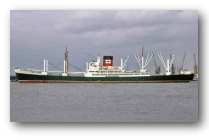


Spreadsheet of the ships I sailed on in my Career
My first ship -


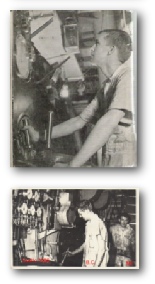
My favourite engine room picture showing the lads from the NZSCo Cumberland and one of their wives who is doing a great impersonation of an Engineer on the controls.
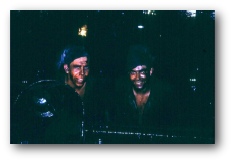
Dougie and Dick on Crankcase Crawl Waipawa in 1965
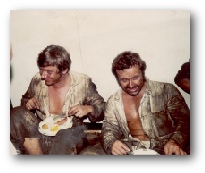
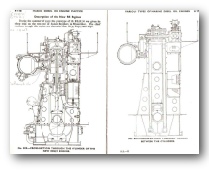
The Type of Engine on the Otaki and Essex. Sulzer RS
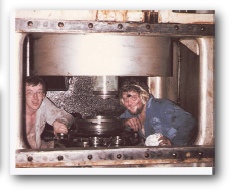
Furness Bridge After pulling 6 units B&W K98FF in Japan.
Breakfast on deck probably after an “all nighter”
3 Pictures
At the Controls
In the entablatures with the piston rod on the way down. Dangerous Job
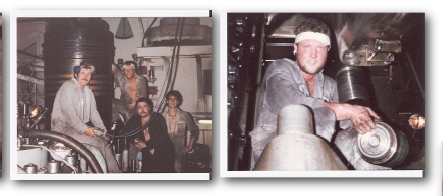
On the tops pulling pistons. 3 from MV Barber Priam
In the Crankcase
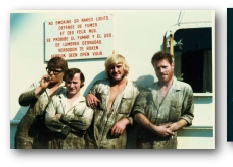
On London Confidence.
Note the sign
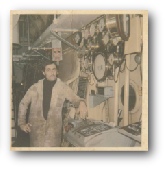
Clan McLean 1967 Doxford. Full Revs 112RPM
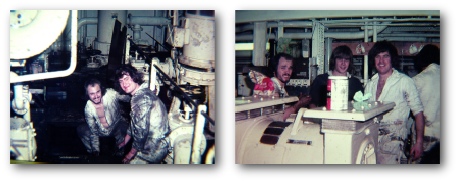
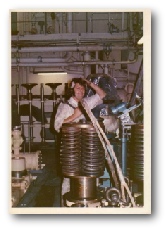
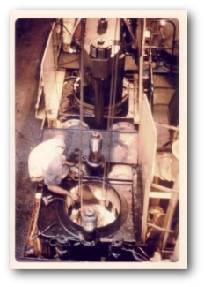
Kildare.
Laurelbank Doxford.
Just to prove I did a bit -
We even stopped working sometimes. Swarfega (now Illegal ?) brings back a few memories

Loads and Loads of Engines and Stuff. Keep you busy for a while.

And what a lot of it was all about -
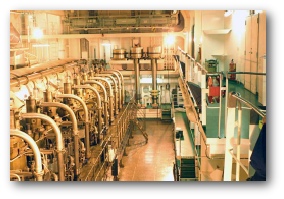
And what it’s all about, still, for Engineers.

Smaller Engines deserve a mention. Can’t recall the amount of times I have removed those Rocker Covers !
